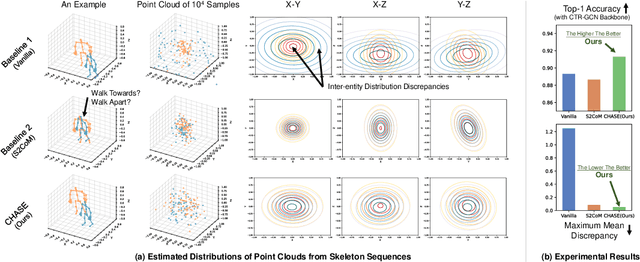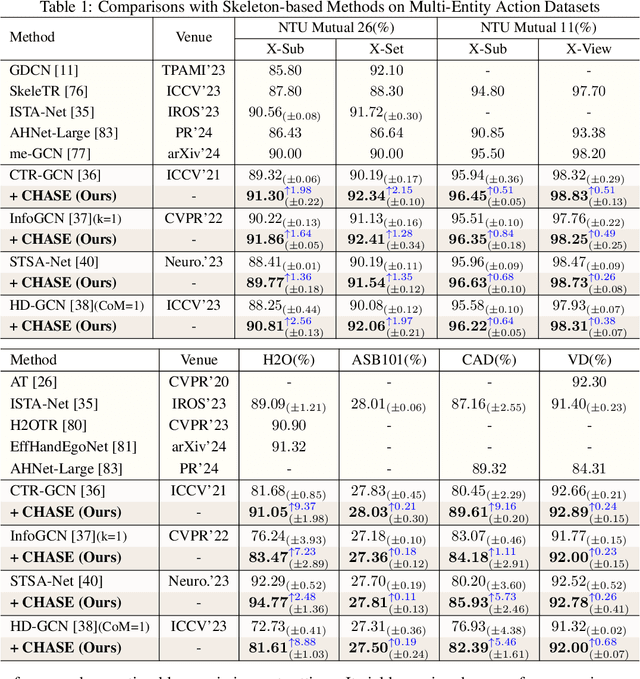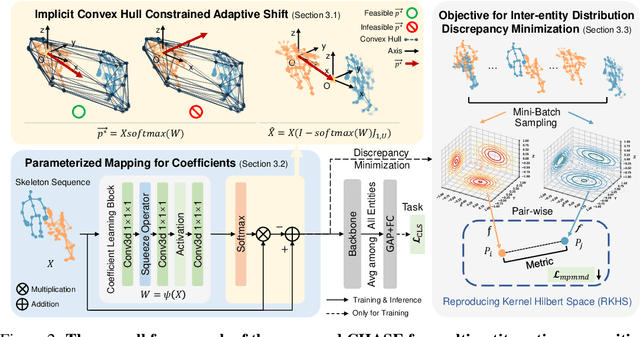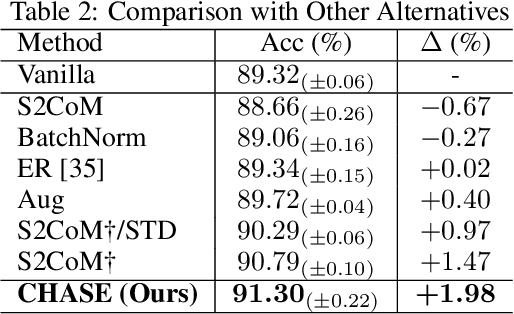Beichen Ding
CHASE: Learning Convex Hull Adaptive Shift for Skeleton-based Multi-Entity Action Recognition
Oct 09, 2024



Abstract:Skeleton-based multi-entity action recognition is a challenging task aiming to identify interactive actions or group activities involving multiple diverse entities. Existing models for individuals often fall short in this task due to the inherent distribution discrepancies among entity skeletons, leading to suboptimal backbone optimization. To this end, we introduce a Convex Hull Adaptive Shift based multi-Entity action recognition method (CHASE), which mitigates inter-entity distribution gaps and unbiases subsequent backbones. Specifically, CHASE comprises a learnable parameterized network and an auxiliary objective. The parameterized network achieves plausible, sample-adaptive repositioning of skeleton sequences through two key components. First, the Implicit Convex Hull Constrained Adaptive Shift ensures that the new origin of the coordinate system is within the skeleton convex hull. Second, the Coefficient Learning Block provides a lightweight parameterization of the mapping from skeleton sequences to their specific coefficients in convex combinations. Moreover, to guide the optimization of this network for discrepancy minimization, we propose the Mini-batch Pair-wise Maximum Mean Discrepancy as the additional objective. CHASE operates as a sample-adaptive normalization method to mitigate inter-entity distribution discrepancies, thereby reducing data bias and improving the subsequent classifier's multi-entity action recognition performance. Extensive experiments on six datasets, including NTU Mutual 11/26, H2O, Assembly101, Collective Activity and Volleyball, consistently verify our approach by seamlessly adapting to single-entity backbones and boosting their performance in multi-entity scenarios. Our code is publicly available at https://github.com/Necolizer/CHASE .
Interactive Spatiotemporal Token Attention Network for Skeleton-based General Interactive Action Recognition
Jul 14, 2023Abstract:Recognizing interactive action plays an important role in human-robot interaction and collaboration. Previous methods use late fusion and co-attention mechanism to capture interactive relations, which have limited learning capability or inefficiency to adapt to more interacting entities. With assumption that priors of each entity are already known, they also lack evaluations on a more general setting addressing the diversity of subjects. To address these problems, we propose an Interactive Spatiotemporal Token Attention Network (ISTA-Net), which simultaneously model spatial, temporal, and interactive relations. Specifically, our network contains a tokenizer to partition Interactive Spatiotemporal Tokens (ISTs), which is a unified way to represent motions of multiple diverse entities. By extending the entity dimension, ISTs provide better interactive representations. To jointly learn along three dimensions in ISTs, multi-head self-attention blocks integrated with 3D convolutions are designed to capture inter-token correlations. When modeling correlations, a strict entity ordering is usually irrelevant for recognizing interactive actions. To this end, Entity Rearrangement is proposed to eliminate the orderliness in ISTs for interchangeable entities. Extensive experiments on four datasets verify the effectiveness of ISTA-Net by outperforming state-of-the-art methods. Our code is publicly available at https://github.com/Necolizer/ISTA-Net
 Add to Chrome
Add to Chrome Add to Firefox
Add to Firefox Add to Edge
Add to Edge